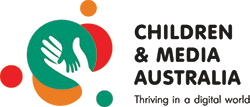Phantom of the Opera

Short takes
Not recommended under 8s, PG to 15 (Viol. Scary scenes)

This topic contains:
- overall comments and recommendations
- details of classification and consumer advice lines for Phantom of the Opera
- a review of Phantom of the Opera completed by the Australian Council on Children and the Media (ACCM) on 11 January 2005.
Overall comments and recommendations
| Children under 8 | Due to the level of violence and scariness in this movie, it is not recommended for children under the age of 8. |
| Children aged 8-13 | Parental guidance is recommended for children aged 8 to 13. |
| Children aged 13-15 | Some children aged 13-15 may still need parental guidance to view this movie. |
| Children over the age of 15 | Should be okay to see this movie with or without parental guidance |
About the movie
This section contains details about the movie, including its classification by the Australian Government Classification Board and the associated consumer advice lines. Other classification advice (OC) is provided where the Australian film classification is not available.
| Name of movie: | Phantom of the Opera |
| Classification: | PG |
| Consumer advice lines: | Medium level violence |
| Length: | 141 minutes |
ACCM review
This review of the movie contains the following information:
- a synopsis of the story
- use of violence
- material that may scare or disturb children
- sexual references
- nudity and sexual activity
- use of substances
- coarse language
- the movie’s message
A synopsis of the story
When Christine Daaé’s father dies, he promises her he will not leave her as an orphan but will send an ‘angel of music’ to watch over her. Christine believes the man known as the Phantom of the Opera is her Angel of Music who has been coaching her as a singer. As such he is able to wield a strong hold over her. The Phantom never shows his face but all the members of the Opera House know he’s there and are terrified of him. The Phantom is in love with Christine, however he becomes extremely jealous when Raoul enters the scene and falls in love with Christine who in turn falls in love with Raoul. One night Christine gets locked in her dressing room and the Phantom appears in her mirror. He takes Christine by the hand and leads her through a backstairs passage to an underground, candle lit cave which is his home. Christine tries to remove the Phantom’s mask which greatly angers him. He finally lets her go.
The Phantom wants the Managers of the Opera House, André and Firmin, to perform an opera he’s written. When they refuse, he kills one of the members, Buquet, by hanging him from a rope during a ballet performance. André and Firmin are thus forced into producing the Phantom’s opera, the Don Juan Triumphant. The Phantom also insists that Christine takes the lead female role. Christine is terrified at the thought of playing the lead role but knows she has no choice. Piangi is to take the role of Don Juan. On the opening night Piangi begins the opera as Don Juan but during the performance the Phantom kills Piangi and takes the lead role himself. Christine realises it is the Phantom and pulls off his mask revealing his badly scarred face. The Phantom runs from the stage and up to the balcony where he causes a huge chandelier to fall on the audience. A fire then beaks out causing further chaos. The Phantom returns to the stage, grabs Christine and takes her back to his cave. Raoul follows after them and nearly drowns in an underwater cavern. The Phantom rescues him, ties him up and forces Christine to now choose between them.
Use of violenceinfo
Research shows that children are at risk of learning that violence is an acceptable means of conflict resolution when violence is glamourised, performed by an attractive hero, successful, has few real life consequences, is set in a comic context and / or is mostly perpetrated by male characters with female victims, or by one race against another.
Repeated exposure to violent content can reinforce the message that violence is an acceptable means of conflict resolution. Repeated exposure also increases the risks that children will become desensitised to the use of violence in real life or develop an exaggerated view about the prevalence and likelihood of violence in their own world.
There is quite a lot of violence in this movie including:
- a curtain falls on an opera singer
- the Phantom chases Buquet and kills him by hanging him from a rope on the stage.
- as a child, the Phantom is held as a freak in a circus and whipped by his gypsy owners. Later he strangles one of the gypsies to escape from the circus.
- Phantom and Raoul have a sword fight.
- the Phantom kills Piangi to take his place as Don Juan.
- a large chandelier falls on the audience.
- the Phantom ties up Raoul.
Material that may scare or disturb children
Under fiveinfo
Children under five are most likely to be frightened by scary visual images, such as monsters, physical transformations.
There is a lot in this movie that would scare children in this age group. As well as the violent scenes mentioned above, the following would also scare young children:
- at the start of the movie, Raoul appears as an old man in a wheelchair – he looks quite ghost like.
- very dramatic music plays when the chandelier is uncovered.
- a black, gloved hand locks Christine in her dressing room.
- the candles in Christine’s room blow out and there’s a deep rumbling sound when the Phantom’s face appears in her mirror.
- the Phantom is scary looking with half of his face covered by a mask.
- when the Phantom takes Christine below ground it is very eerie – foggy and candle lit. He takes her in a boat over the cavern which reflects the candle light.
- the Phantom has a strong hold over Christine – he seems able to make her do things against her will.
- Buquet tells a poem about the Phantom and holds up a hangman’s noose.
- when Christine tries to remove the Phantom’s mask he explodes in temper.
- the Phantom chases and kills Buquet.
- the Phantom appears during the Masquerade music and disappears in a ball of fire.
- the gypsies are scary and call the Phantom the “devil’s child”.
- the Phantom and Raoul fight in a cemetery where Christine has gone to her father’s grave—it is very eerie.
- the Phantom’s opera is full of fire and shadows.
- when Christine pulls the Phantom’s mask off, his face is revealed as shockingly scarred.
- when the chandelier falls, people are screaming and rushing everywhere. The Opera House is set on fire.
- the Phantom kidnaps Christine and they are chased by soldiers.
- Raoul falls down a trap door and nearly drowns under water.
- all of the effects such as the music, the lighting, the voices, characters’ faces, etc are all scary.
Aged five to eightinfo
Children aged five to eight will also be frightened by scary visual images and will also be disturbed by depictions of the death of a parent, a child abandoned or separated from parents, children or animals being hurt or threatened and / or natural disasters.
Children in this age group would also likely be scared by the above-mentioned scenes.
Aged eight to thirteeninfo
Children aged eight to thirteen are most likely to be frightened by realistic threats and dangers, violence or threat of violence and / or stories in which children are hurt or threatened.
Children in this age group would still be scared by the above mentioned scenes as they are very realistic.
Thirteen and overinfo
Children over the age of thirteen are most likely to be frightened by realistic physical harm or threats, molestation or sexual assault and / or threats from aliens or the occult.
Some children in this age group could still be scared by this movie.
Sexual references
None
Nudity and sexual activity
None
Use of substances
None
Coarse language
None
In a nutshell
The take home message is that human behaviour is set at an early age and is sometimes the result of how one is treated as a child.
Values parents may wish to encourage include empathy.
Parents could use aspects of the movie to discuss with their children what their own family’s values are, and what the real life consequences can be of some actions and attitudes such as violence as way to solve conflict, jealousy and vengeance.
Movie Review Search
Title:
Tip: Leave out the first A, An or The
Age suitability:
Selecting an age will provide a list of movies with content suitable for this age group. Children may also enjoy movies selected via a lower age.
About our colour guide
Content is age appropriate for children this age
Some content may not be appropriate for children this age. Parental guidance recommended
Content is not age appropriate for children this age
CMA thanks the Romeo family for its support

About CMA
Children and Media Australia (CMA) is a registered business name of the Australian Council on Children and the Media (ACCM).
CMA provides reviews, research and advocacy to help children thrive in a digital world.
ACCM is national, not-for-profit and reliant on community support. You can help.
ABN: 16 005 214 531
- Home
- Site Map
- Disclaimer
- © Children and Media Australia 2012 - 2025





